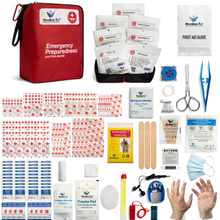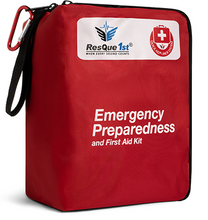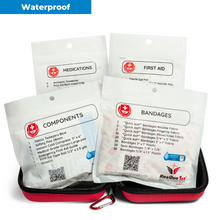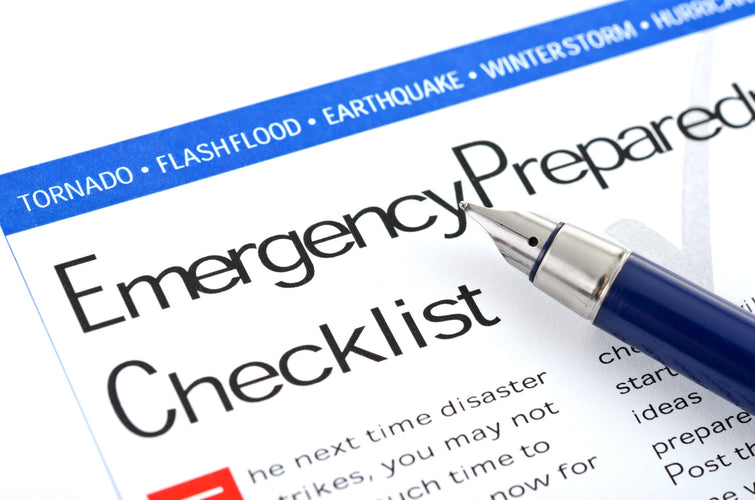
You can never tell when an emergency is about to come. It can happen to anyone at any time, and the only thing you can do is prepare. Fortunately, preparing goes a long way, which is why more than 400,000 lives are saved every year by CPR.
Well, you can carry the philosophy behind CPR training to other aspects of your daily life, home, or business. Here's a helpful emergency preparedness checklist to get you started!
What Is an Emergency Preparedness Kit?
Emergency preparedness kits can take many forms. However, the idea is to have something available within reach that can help prevent, mitigate, or alleviate an emergency situation.
However, these are not limited to first aid kits, which are an important part of most emergency kits. Instead, an emergency preparedness kit should represent the most likely risks that you, your family, your workers, or your community may face.
Who Needs an Emergency Preparedness Kit?
Ideally, everyone should have some type of emergency preparedness kit, however big or small. Whether you're a single person, a large family, a school, a business, or anything else, emergencies can happen. However, each of these examples will have entirely different needs.
Therefore, as you browse our list and prepare your own emergency kit, consider what applies to you and what doesn't. For example, a business with a fleet of vehicles driving thousands of miles every day through Maine will have different preparedness needs than a community school in Arizona.
Also, you may want to consider the level of risk you face. A single person living alone in an apartment likely won't need an AED machine, while a gym serving senior citizens should definitely invest in one.
1. First Aid Kit
A first-aid kit is the bare minimum in emergency preparedness kits. This is true whether you have a large business or you're planning a short, solo backpacking trip.
Every building, vehicle, and personal bag should have some type of first aid kit. With the right tools, you can be prepared for most emergency situations.
You never know what you're going to need, so it's best to be prepared for anything. However, that isn't always feasible. Luckily, even with a small kit, you can take care of minor injuries, which may be more appropriate for personal carrying or in an office environment.
Still, in more dangerous situations, like tree work or machine shops, make sure there are plenty of first aid options available. These should include splints, gauze, and necessary tools.
Regardless, you should never be too far from a first-aid kit. Look at different first-aid kits to see what's right for your needs. Some can even fit in your wallet!
2. CPR Masks
CPR masks protect both the provider and the recipient, they're inexpensive, and they can fit on your keychain for easy access. All of this puts CPR masks toward the top of our list.
You can buy these in bulk for a low price and pass them around to your staff and/or volunteers and guests. This way, everybody trained in CPR can safely administer CPR without the risk of transmitting diseases.
3. AED Machines (in Stationary Locations)
Unfortunately, an AED machine may not be a great option to keep in your vehicle. They're relatively expensive, and they need to stay charged to function properly.
However, if you have a building with relatively high foot traffic, a substantial elderly population, or a fitness center, an AED machine is one of the best emergency preparedness tools you could have. If your building has a higher risk, keep in mind that an AED machine has a 2.63x higher survival rate than CPR.
4. Jumpstarter and Other Car Tools
Certain car repair tools can potentially save lives if you live in rural areas or have a larger fleet of employees. A jumpstarting kit can help you or your employees get back on the road in case of a dead battery, which is far more common in cold weather. Unfortunately, this makes for a more dangerous situation.
Other tools can come in handy for basic car needs, such as spare tires, tire irons, and jacks. It's best to upgrade your jacks from the standard bottle or scissor jacks, especially for larger vehicles, as even slight wear can lead to breakage, posing safety hazards.
Beyond that, you may consider a basic tool kit or multitool. Many parts on vehicles can be fixed with a simple screwdriver, Allen wrench, or socket. A multitool is certainly the most economical and storable way to go, but other tools will prepare you better.
Remember, more than 69 million cars break down every year in the US alone. Every vehicle needs to prepare for these situations, as they're bound to happen to every driver at some point.
5. Weather Protection
Speaking of dangerous weather, it's important that anyone traveling or driving in potentially dangerous conditions has protection from the elements. If you have a car (or fleet), make sure that it's stocked with gloves, hats, and emergency blankets.
For example, an emergency reflective blanket can reflect up to 98% of heat. This can protect people from both extreme heat and cold weather, as these can help keep heat in or out. Tools like this only save space, money, and preparation!
Moreover, emergency ponchos are also quite cheap and can protect people from rain or hail. Even an extra blanket or sweatshirt in your trunk can potentially save your life!
Also, you should have what you need to both prevent and address weather-related issues relative to your area. For example, a school in Florida may want cooling towels to address potential heat stroke, whereas a driver in North Dakota may need hand warmers.
6. Non-Perishable Foods
Non-perishable food items can save lives in a pinch. Drivers can become stranded, roads can be shut down, and you can't always predict these situations.
Therefore, having some spare food and water available can save lives. Non-perishables are the best bet, as they won't expire and you won't have to worry about replacing them until they're used. They can also be quite cheap and easy to stock!
The amount you need will depend entirely on the situation. A truck driver in Iowa may be stranded for a couple of days in a storm, whereas a coal mine in West Virginia may need enough to feed a crew for two weeks, as rescue operations can take much longer.
7. Self-Defense Tools
Depending on the circumstances, self-defense tools can be life-saving. Of course, places of worship, community resource centers, schools, and other locations have no need for weapons. However, if you walk alone in uncomfortable settings, whether it be college campuses or snake-ridden deserts, it doesn't hurt to have some extra peace of mind.
For example, if your state allows it, pepper spray is easily accessible, concealable, and nonlethal. If you believe a self-defense tool is the right direction for your safety, just ensure you comply with laws and store them safely!
8. Backup Communication Systems or Signal Boosters
A cell booster, satellite phone, or alternative communication system can save lives in rural areas. Throughout the country, there are plenty of blindspots for cellular data, no matter how good your plan is or how new your phone is.
Therefore, investing in signal boosters, radios, or something similar can potentially save lives. That's true whether you have a fleet of drivers or if you're planning a backpacking trip in a remote area.
Even a stationary business can benefit from a landline. While we all have cell phones, having a backup is still beneficial in an emergency situation, even if it's just for calling 911.
9. Emergency Prevention Tools
The best way to treat an emergency is to not let one happen. For that reason, we also want to suggest having hand sanitizer, masks, thermometers, and other safety tools available on-site or with you when possible.
There are plenty of other examples of this. For example, wearing a bear bell on a hike can prevent you from ever needing bear spray (or an ambulance). This largely depends on the nature of your institution or activity, but consider how you could prevent emergencies from happening in the first place.
Use This Emergency Preparedness Checklist Wisely
Now that you have a helpful emergency preparedness checklist use it to your advantage today. An emergency can come about at any time, so it's best to be prepared, have the proper training, and have a concrete emergency preparedness plan. Nobody plans on these situations, but you can still prepare for them in advance.
Keep reading our blog for our latest life-saving tips (literally), and check out our catalog to see what we can add to your collection!









